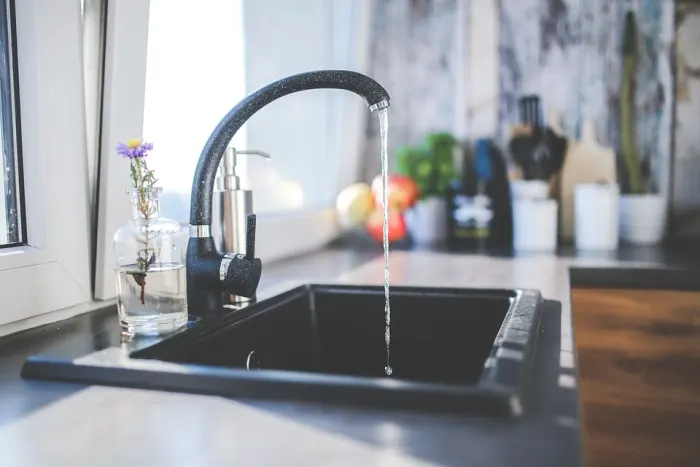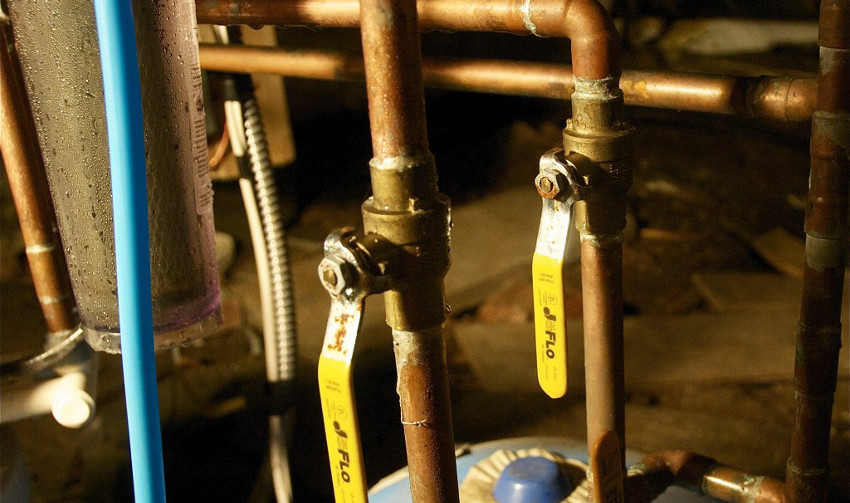What are your ideas regarding How To Fix Noisy Pipes?

To diagnose loud plumbing, it is very important to identify initial whether the undesirable noises occur on the system's inlet side-in various other words, when water is turned on-or on the drainpipe side. Noises on the inlet side have actually varied reasons: extreme water pressure, used valve and also tap parts, poorly linked pumps or other devices, improperly placed pipeline fasteners, and also plumbing runs including way too many tight bends or various other limitations. Sounds on the drain side normally stem from inadequate location or, similar to some inlet side noise, a format including tight bends.
Hissing
Hissing sound that happens when a faucet is opened somewhat generally signals too much water pressure. Consult your local public utility if you think this trouble; it will be able to inform you the water pressure in your location as well as can set up a pressurereducing valve on the inbound supply of water pipeline if required.
Thudding
Thudding noise, commonly accompanied by shuddering pipelines, when a faucet or device valve is shut off is a problem called water hammer. The noise and also vibration are brought on by the reverberating wave of stress in the water, which unexpectedly has no location to go. Sometimes opening up a valve that releases water quickly right into a section of piping consisting of a restriction, arm joint, or tee installation can produce the exact same condition.
Water hammer can normally be healed by installing fittings called air chambers or shock absorbers in the plumbing to which the trouble valves or taps are connected. These gadgets permit the shock wave created by the halted circulation of water to dissipate airborne they include, which (unlike water) is compressible.
Older plumbing systems might have short upright sections of capped pipeline behind wall surfaces on faucet competes the same function; these can at some point fill with water, decreasing or damaging their effectiveness. The treatment is to drain the water supply entirely by shutting off the primary water valve as well as opening up all taps. Then open the major supply valve and also shut the faucets one by one, beginning with the tap nearest the valve and finishing with the one farthest away.
Babbling or Shrilling
Intense chattering or shrilling that occurs when a valve or faucet is activated, which usually disappears when the fitting is opened completely, signals loosened or defective internal parts. The solution is to replace the shutoff or tap with a brand-new one.
Pumps and also appliances such as washing devices as well as dish washers can move electric motor sound to pipelines if they are improperly connected. Link such items to plumbing with plastic or rubber hoses-never stiff pipe-to isolate them.
Various Other Inlet Side Noises
Squeaking, squealing, damaging, breaking, and also touching typically are triggered by the growth or tightening of pipelines, usually copper ones providing warm water. The audios take place as the pipes slide against loose bolts or strike nearby house framing. You can often pinpoint the location of the problem if the pipes are exposed; simply adhere to the audio when the pipelines are making noise. Probably you will discover a loose pipe hanger or a location where pipelines exist so near flooring joists or various other mounting items that they clatter versus them. Affixing foam pipeline insulation around the pipes at the point of get in touch with ought to fix the problem. Be sure bands and also wall mounts are secure and also give appropriate assistance. Where possible, pipe fasteners need to be affixed to large architectural aspects such as foundation wall surfaces rather than to framing; doing so decreases the transmission of resonances from plumbing to surface areas that can enhance and move them. If affixing fasteners to framing is inescapable, cover pipelines with insulation or various other durable material where they speak to bolts, as well as sandwich the ends of brand-new fasteners in between rubber washers when mounting them.
Remedying plumbing runs that struggle with flow-restricting limited or various bends is a last resort that must be carried out just after speaking with a proficient plumbing professional. However, this circumstance is fairly typical in older houses that might not have been constructed with indoor plumbing or that have seen a number of remodels, especially by beginners.
Drainpipe Sound
On the drainpipe side of plumbing, the chief goals are to remove surfaces that can be struck by dropping or rushing water and also to protect pipes to consist of unavoidable audios.
In new building and construction, bathtubs, shower stalls, bathrooms, and also wallmounted sinks as well as containers ought to be set on or versus durable underlayments to lower the transmission of noise via them. Water-saving bathrooms and also faucets are much less loud than conventional versions; install them rather than older types even if codes in your area still allow using older components.
Drainpipes that do not run up and down to the cellar or that branch into horizontal pipeline runs sustained at floor joists or various other framing existing specifically problematic sound troubles. Such pipes are big sufficient to emit substantial vibration; they additionally carry considerable quantities of water, which makes the circumstance even worse. In brand-new building, define cast-iron dirt pipelines (the large pipes that drain pipes toilets) if you can afford them. Their enormity has much of the noise made by water going through them. Likewise, stay clear of routing drainpipes in walls shown rooms and rooms where individuals collect. Wall surfaces containing drainpipes must be soundproofed as was defined earlier, making use of dual panels of sound-insulating fiberboard as well as wallboard. Pipelines themselves can be covered with unique fiberglass insulation made for the purpose; such pipelines have an impervious vinyl skin (often having lead). Results are not constantly sufficient.
WHY IS MY PLUMBING MAKING SO MUCH NOISE?
This noise indeed sounds like someone is banging a hammer against your pipes! It happens when a faucet is opened, allowed to run for a bit, then quickly shut — causing the rushing water to slam against the shut-off valve.
To remedy this, you’ll need to check and refill your air chamber. Air chambers are filled with — you guessed it — air and help absorb the shock of moving water (that comes to a sudden stop). Over time, these chambers can fill with water, making them less effective.
You’ll want to turn off your home’s water supply, then open ALL faucets (from the bathroom sink to outdoor hose bib) to drain your pipes. Then, turn the water back on and hopefully the noise stops! If you’re still hearing the sound, give us a call to examine further.
Whistles
Whistling sounds can be frustrating, as sometimes the source isn’t easily identified. However, if you can pinpoint which faucet or valve that may be the cause, you’ll likely encounter a worn gasket or washer — an easy fix if you replace the worn parts!Whistling sounds from elsewhere can mean a number of things — from high water pressure to mineral deposits. Your best plan of attack here is to give our plumbing experts a call. We’ll be able to determine where the noise is coming from and what the cause may be, then recommend an effective fix!
Cracks or Ticks
Cracking or ticking typically comes from hot water going through cold, copper pipes. This causes the copper to expand resulting in a cracking or ticking sound. Once the pipes stop expanding, the noise should stop as well.
Pro tip: you may want to lower the temperature of your water heater to see if that helps lessen the sound, or wrapping the pipe in insulation can also help muffle the noise.
Bangs
Bangs typically come from water pressure that’s too high. To test for high water pressure, get a pressure gauge and attach it to your faucet. Water pressure should be no higher than 80 psi (pounds per square inch) and also no lower than 40 psi. If you find a number greater than 80 psi, then you’ve found your problem!
Next step is to give us a call in order to install a pressure regulator. Trust us, you don’t want to wait to resolve this issue. Not only is the sound annoying, but high water pressure can be destructive to your home — including damaging certain appliances, like your washer and dishwasher.
Dripping
You might be accustom to the slow quiet drip your kitchen faucet makes. You might have even tuned out your bathroom sink dripping and drabbing all day long — but it’s time to find its cause.
A slow drip could signify a variety of easy to fix issues, such as a worn out O ring, or loose part. And by ignoring the drip, you could be wasting up to 2,000 gallons of water a year! So start conserving water — get it looked at ASAP.
https://www.pwessig.com/blog/2018/december/why-is-my-plumbing-making-so-much-noise-/

I'm certainly very enthusiastic about How To Fix Noisy Pipes and I really hope you liked the entire page. Make sure you set aside a second to distribute this content if you appreciated it. I appreciate reading our article about Why Your Water Pipes Are Noisy and How To Shut Them Up.
Visit The Following Page